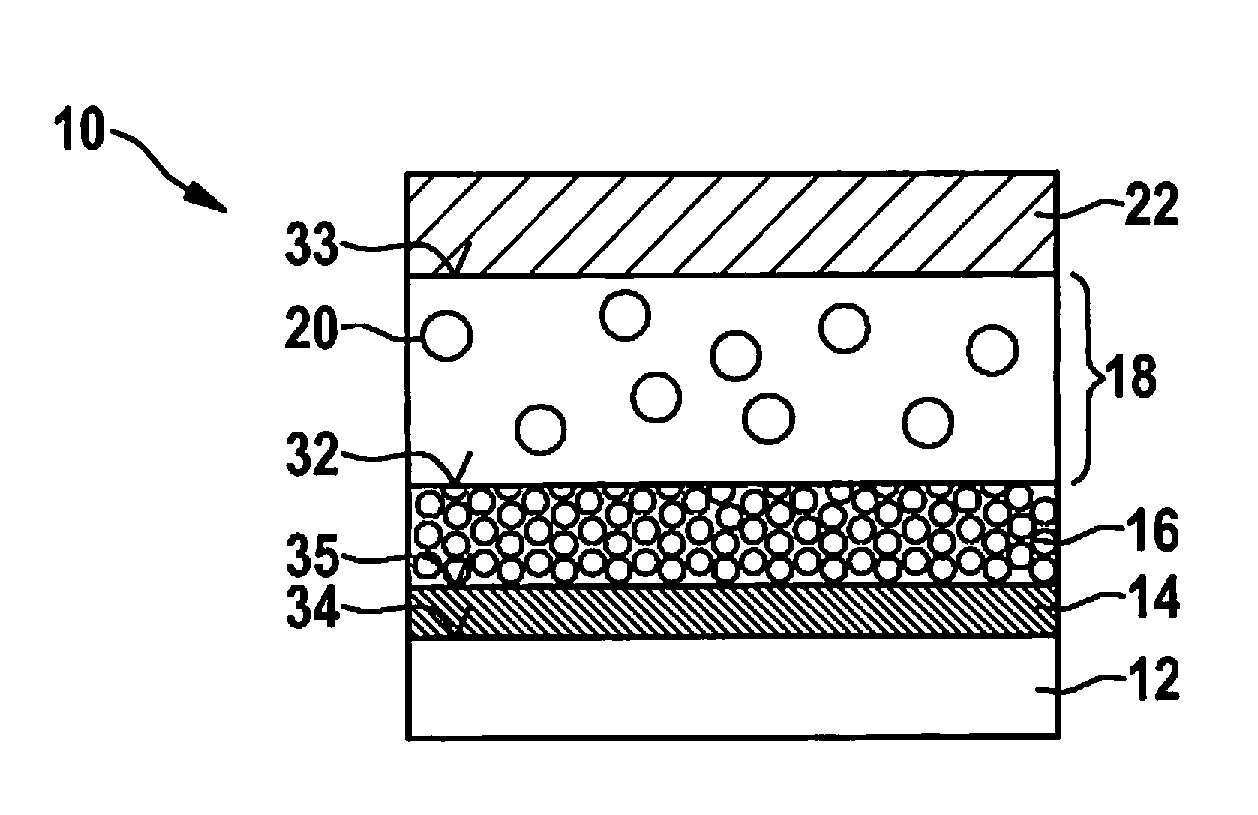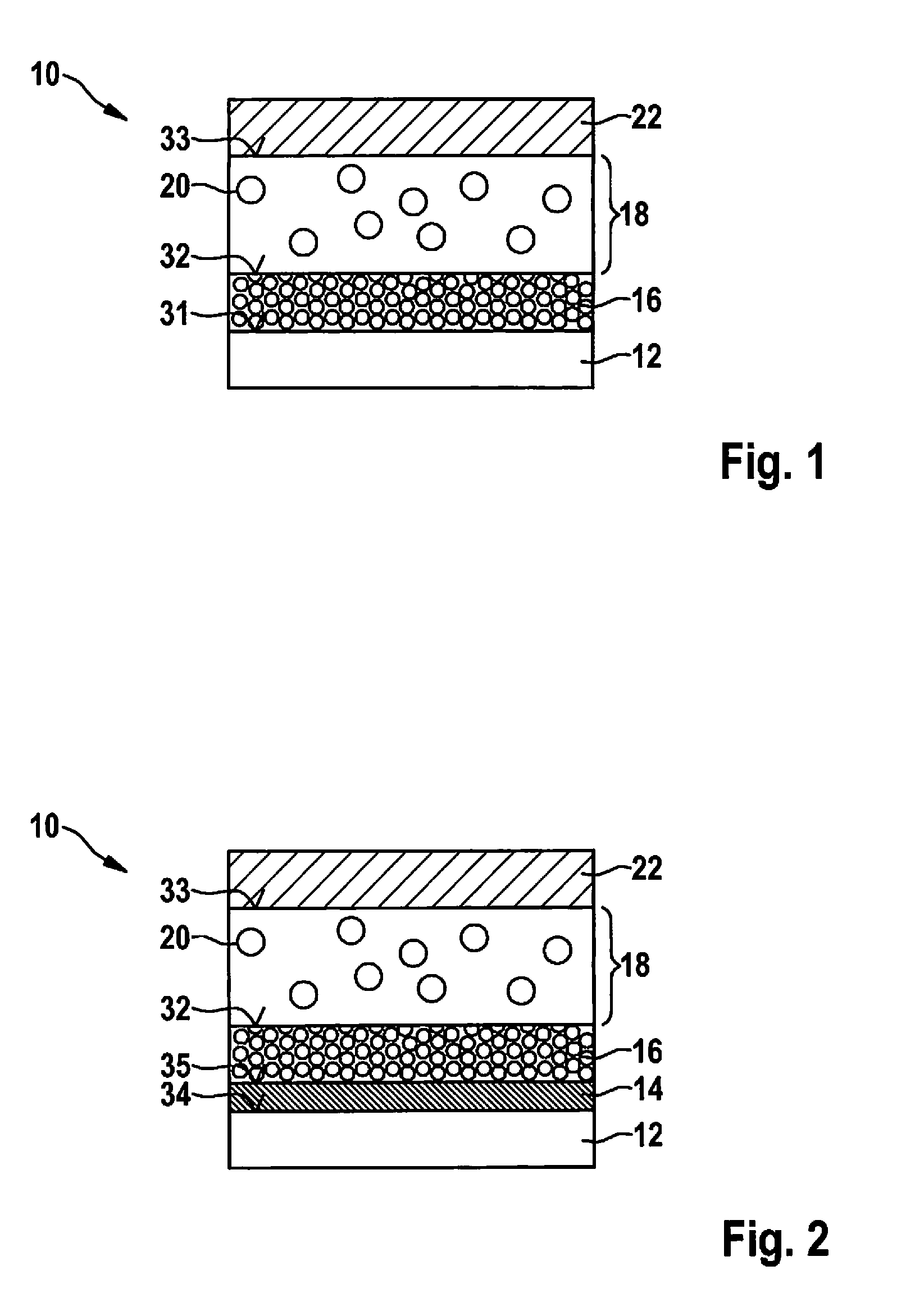Galvanic element and method for the production thereof
a technology of galvanic elements and anodes, which is applied in the direction of secondary cells, battery service/maintenance, sustainable manufacturing/processing, etc., can solve the problems of graphite anodes, graphite anodes to burst or even ignite, and excess cell pressure, etc., to achieve high capacitance, high energy density, and high capacitance
- Summary
- Abstract
- Description
- Claims
- Application Information
AI Technical Summary
Benefits of technology
Problems solved by technology
Method used
Image
Examples
Embodiment Construction
[0037]FIG. 1 shows a galvanic element 10. In the situation shown in FIG. 1, step a) of the method is carried out. Here, steps i) through iv) are run through in order to produce the layer sequence. First, in step i) a current conductor 12 assigned to the anode is provided. This is realized for example as copper foil. In the second step ii), a separator 16 is applied on current conductor 12 assigned to the anode, a first boundary layer 31 forming between current conductor 12 assigned to the anode and separator 16. As initial product for separator 16, a ceramic powder is suitable, applied for example by aerosol coating onto current conductor 12 assigned to the anode. As ceramic powder, in particular lithium garnet is suitable, which has good conductivity for lithium ions. Separator 16 is not electrically conductive, so that it also assumes the function of an electrical insulator.
[0038]In the third step iii), a cathode 18 is applied onto separator 16, so that a second boundary layer 32 ...
PUM
| Property | Measurement | Unit |
|---|---|---|
| particle size | aaaaa | aaaaa |
| thicknesses | aaaaa | aaaaa |
| thicknesses | aaaaa | aaaaa |
Abstract
Description
Claims
Application Information
 Login to View More
Login to View More - R&D
- Intellectual Property
- Life Sciences
- Materials
- Tech Scout
- Unparalleled Data Quality
- Higher Quality Content
- 60% Fewer Hallucinations
Browse by: Latest US Patents, China's latest patents, Technical Efficacy Thesaurus, Application Domain, Technology Topic, Popular Technical Reports.
© 2025 PatSnap. All rights reserved.Legal|Privacy policy|Modern Slavery Act Transparency Statement|Sitemap|About US| Contact US: help@patsnap.com


